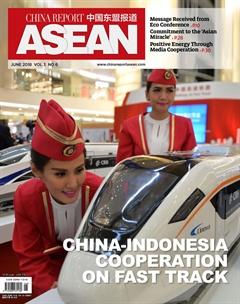中国–东盟”10+1”机制
中国—东盟“10+1”机制是中国与东南亚国家联盟建立的合作机制,自1997年成立以来,双方合作不断扩大与深化,现已发展成一个密切的政治、经济合作组织,成为东亚区域合作的主要机制之一。1991年,中国与东盟开启对话进程,中国成为东盟的对话伙伴国。1997年,双方举行第一次“10+1”领导人会议,宣布建立中国—东盟睦邻互信伙伴关系。2010 年1月,中国—东盟自贸区正式建成,这是双方关系史上的重大事件,开启了中国与东盟实现经济一体化的进程。自此,中国成为第一个加入《东南亚友好合作条约》和第一个同东盟建立战略伙伴关系的域外大国,也是第一个同东盟建成自贸区的大国。为保障双方合作的顺利与成效,“10+1”机制确立了一套完整的对话与合作平台,主要包括政府首脑会议、部长级会议和工作组会议。中国—东盟中心是推进双方合作的重要常设机构。
Established in 1997, the China-ASEAN (10+1) Cooperation Mechanism has played an important role in promoting closer political and economic ties between China and ASEAN members, and has become a major forum for regional cooperation.
China-ASEAN dialogue was launched in 1991. The first China-ASEAN (10+1) summit convened in 1997 and announced the formation of the China-ASEAN partnership of good-neighborliness and mutual trust. The China-ASEAN Free Trade Area was created in January 2010, which has come to represent a milestone in China-ASEAN bilateral relations after launching the process of China-ASEAN economic integration. China was the first non-ASEAN country to join the Treaty of Amity and Cooperation in Southeast Asia and establish a strategic partnership with ASEAN as well as the first major country to build a free trade area with ASEAN.
Necessary platforms for dialogue are in place to ensure successful and effective bilateral cooperation including the ASEAN-China Summit, ministerial meetings and working group meetings. The ASEAN-China Center is a permanent body for promoting bilateral cooperation.
亞太经济合作组织
亚太经济合作组织是亚太地区层级最高、领域最广、最具影响力的经济合作机制,现有21个成员,以及东盟秘书处、太平洋经济合作理事会、太平洋岛国论坛秘书处3个观察员。1989年11月,澳大利亚、美国、日本、韩国、新西兰、加拿大及当时的东盟六国在澳大利亚首都堪培拉举行亚太经济合作组织首届部长级会议,标志着亚太经合组织的正式成立。作为经济论坛,亚太经合组织主要讨论与全球和区域经济有关的议题,如贸易和投资自由化、区域经济一体化、互联互通、经济结构改革和创新发展、全球多边贸易体系、经济技术合作和能力建设等,旨在维护本地区成员的共同利益,促进成员间的经济相互依存,加强开放的多边贸易体制,减少区域贸易和投资壁垒。亚太经合组织共有5个层次的运作机制:领导人非正式会议、部长级会议、高官会、委员会和工作组、秘书处。中国于2001年和2014年先后在上海和北京成功举办过两届亚太经合组织领导人非正式会议,为促进区域贸易和投资自由化便利化、推动全球和地区经济增长发挥了积极作用。
The Asia-Pacific Economic Cooperation (APEC) forum is the highest-level mechanism for economic cooperation in the Asia-Pacific region. With 21 member economies and three observers—the ASEAN Secretariat, the Pacific Economic Cooperation Council and the Pacific Islands Forum—it covers an extensive part of the world and wields significant influence.
The forum was formally established in November 1989 at a ministerial meeting in the Australian capital of Canberra, attended by Australia, the U.S., Japan, South Korea, New Zealand, Canada, and the then-six ASEAN countries.
As an economic forum, APEC focuses on global and regional economic issues such as trade and investment liberalization, regional economic integration, connectivity, economic structural reform and innovative development, global multilateral trade systems, economic and technological cooperation and capacity building. Its primary goal is to safeguard the common interests of its member economies in the Asia-Pacific, increase their economic interdependence, create an open multilateral trade system and reduce regional trade and investment barriers.
APEC operates at five institutional levels: meetings of economic leaders, ministerial meetings, meetings of senior officials, committees and working groups and the Secretariat. China hosted the 2001 and 2014 APEC economic leaders meetings in Shanghai and Beijing respectively and has played an active role in promoting free and open regional trade and investment and stimulating regional and global economic growth.

